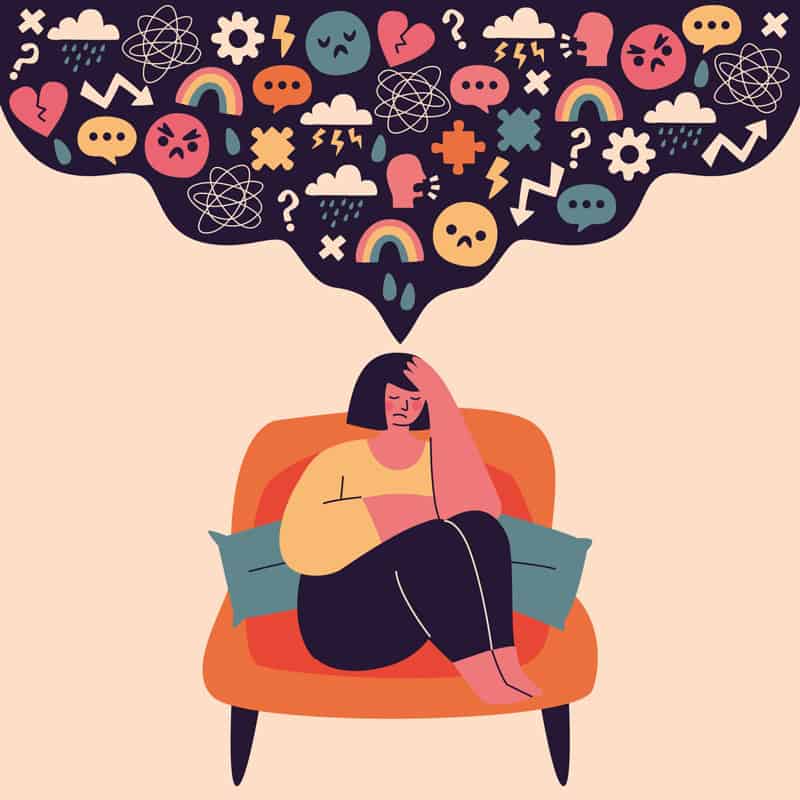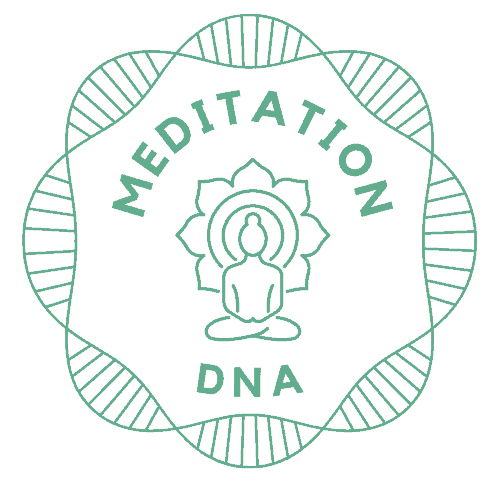
What is Self-Regulation?
Self-regulation refers to being aware of your emotions, thoughts, and behaviors and choosing how to respond instead of reacting automatically. It, therefore, disrupts our impulsive or somewhat instinctual responses. It allows us to act according to our deepest held values and desires or even calm us down in a state of panic. Through self-regulation, we can therefore learn to change our emotional state and mental state from a perceived negative experience to a more positive one.
By learning or improving our self-regulation skills we can greatly improve our mental health.
Self-regulation skills can also help with goal setting, time management, problem-solving, decision making, impulse control, emotional regulation, stress reduction, assertiveness training, conflict resolution, communication, negotiation, anger management, and more.
What does dysregulated emotions feel like?
- You feel spaced out, at a loss for words, can’t remember where you are
- You feel scattered, trying to do a lot at once but not completing any of it
- You feel clumsy and are tripping over things, dropping things or losing things
- Your voice and facial expression are flat and energy levels feel abnormally low
- You feel emotionally numb or depressed
- You can’t feel parts of your body — hands, mouth, face, nose, feet
- You have emotional outbursts of rage, anger or frustration or extreme mood swings
- You have sweaty palms
- Racing heart rate
- You feel very agitated, fidgety, restless and anxious
Below is a great way to pinpoint which physical sensations might be related to certain emotions and reactions – this is to help pinpoint what you might be feeling as often it is unclear to some at the moment.

Development of Emotional Self Regulation skill
Self-regulatory development is an ongoing process that begins early on in life and continues throughout adulthood. The way we regulate and deal with our emotions or feelings or rather how we are taught to as children greatly influence how we deal with these same emotions later on in life.
Early experiences – Parents play a key role in helping children develop their capacity for self-control by modeling appropriate behaviors and providing opportunities for practice. For example, parents who yell at or punish their child when he/she misbehaves may teach him/her that yelling will get you what you want.
When we are taught to self-regulate from a young age (which is often through watching and copying those older than us such as our parents or the people we grew up with) we can act appropriately when uncomfortable feelings come up in adulthood.
This can be perceived by many as ’emotional maturity which fundamentally reflects the ability to face emotional, social, and cognitive threats in the environment with patience and thoughtfulness.
If this concept has to lead you to think of mindfulness… that’s no fluke. Mindfulness plays a vital role in learning to self-regulate.
The importance of Emotional Self-regulation
An adult with poor self-regulation skills may lack self-confidence and self-esteem and have trouble handling stress and frustration. Often, this might be expressed in terms of anger or anxiety, and in more severe cases, this individual may be diagnosed with a mental disorder.
Self-regulation is also important in that it allows you to act in accordance with your deeply held values or social conscience and to express yourself appropriately. If you value academic achievement, it will allow you to study instead of slack off before a test. If you value helping others, it will allow you to help a coworker with a project, even if you are on a tight deadline yourself.
In its most basic form, self-regulation allows us to bounce back from failure while also staying calm under pressure.
Source: verywellmind.com
It is clear that self-regulation is a skill that is important to implement from a young age when raising children and it is a big aspect of ‘mindful parenting’. Many adults believe that a child will grow out of their ‘tantrum phase’ but this tantrum phase just takes different forms as we grow older. A child throwing a tantrum over not getting a toy is pretty similar to an adult getting frustrated when they don’t get that promotion at work in emotional response.
So where does Mindfulness fit in?
Mindfulness is simply being aware of what is happening right now. This includes noticing when you feel angry, sad, frustrated, anxious, etc., but also including awareness of physical sensations such as hunger, thirst, pain, fatigue, etc.
By being aware of this vast spectrum of feelings that we feel within our daily experiences we can choose which emotional response might be the most appropriate when a situation arises. By practicing skills like focused breathing and gratitude, we can put some space between ourselves and our reactions, which can lead to better focus and feelings of calmness and relaxation.
So how would I implement self-regulation practically?
It is important to know that within every situation every person has a choice as to how they are going to react and what the consequences of these choices are. At any point. therefore, we can choose to react and therefore act differently. You are not a slave to your thoughts or feelings or emotions. Often it is not the situation that is negative or positive in experience but how we chose to react to these experiences and what we take from them going into the future. This excludes traumatic events as our immediate reactions when under high stress is a protective mechanism. Our immediate reactions can teach us a lot about our mental and emotional states.
10 simple self-regulating practices:
1. Progressive muscle relaxation
This is a technique that can be done as a guided meditation and would take slightly longer to implement. It looks at taking one part of the body at a time tensing it and then relaxing it – focusing on only that part and no other. It releases tension in the body teaching the difference in the sensation of being fully tense and fully relaxed.
Progressive muscle relaxation script:
Start by finding a comfortable seat or lie down
Close your eyes
Relax your entire body
Starting at the toes – inhale tense and scrunch your toes
Hold… exhale release and relax your toes
Inhale tense your ankles by flexing your feet up to your face
Hold… exhale release and relax the ankles
inhale tense your thighs by pulling your kneecaps up
Hold… exhale release and relax your thighs
Inhale tense your buttocks by squeezing your glutes together
Hold… exhale release and relax the glutes
inhale tense and arch your lower back
Hold… exhale release and relax your lower back
Inhale tense your abdominals by curve the back and pulling naval towards the spine
Hold… exhale release and relax the abs
inhale tense and curl the hands into fists
Hold… exhale release and relax hands
Inhale tense the wrists by pointing hands up to face
Hold…exhale release and relax the wrists
Inhale tense your biceps by bending the arms towards the body
Hold… exhale release and relax the biceps
inhale tense shoulders by pulling them up towards the ears and squeezing shoulder blades together
Hold… exhale release and relax shoulders and shoulder blades down
Inhale tense your throat, chest and neck by pulling chin into the chest
Hold… exhale release and relax the chin, chest and neck
inhale tense and scrunch your entire face – close eyes, scrunch nose, purse lips
Hold… exhale release and relax your face
Now, finally, Inhale tense your entire body
Hold… exhale release and relax the entire body
Progressive muscle relaxation for kids is also a thing! The earlier we learn it the better!
2. Form of self-expression
This can be anything that brings you joy – in a way that you can feel a release of emotions in an authentic non-judgmental way. Often this includes an artistic expression such as; dancing, writing, painting, making or playing music, singing it can also relate to expression through clothes or fashion, yelling, talking, and speaking your mind just to name a few.
Through self-expression comes self-discovery which is a vital part of developing and growing into who we want to be.
3. 5 4 3 2 1 Sensory Grounding
What is the 54321 method?
When we feel our minds are spiraling out of control specifically in bouts of a distressing or traumatic scenario or high levels of anxiety – immediately try this.
Mentally name 5 things you can hear
4 things you can see
3 things you can touch
2 things you can smell
1 thing you can taste
It redirects our thoughts to this present moment and taps into our present body.
4. Journaling
Putting thought to paper when feelings of overwhelm set in has a great impact. Visually seeing the words changes the way we might perceive these thoughts and the impact they might have on us. It is also a form of self-expression and has the same effect as talking and opening up to someone that might be bothering us. Expressing our thoughts are very important to understand where they might be coming from and why they might be bothering us.
5. Deep breathing
Take slow breaths and slow out breaths. Try and imagine you are breathing into your belly. Breathwork of any sort allows us to focus all our attention on our breaths and takes away from the emotional or mental frenzy that might be happening in our minds and bodies. It gives us that ‘breather’ to think before we react or speak especially in moments where we feel strong emotions such as anger, frustration, love, or anxiety.
6. Cold water/ice on wrists
Coldwater (specifically put on areas that are sensitive like the wrists) almost jolts or resets our nervous system. Our mind immediately starts to focus on the extreme temperature change and takes us out of our anxiety or frustration-filled minds. The ice is fundamentally a distraction as the mind struggles to focus on anything else. This is very useful when you feel you might be spiraling into a panic or anxiety attack.
7. Stress ball
Stress ball channels pent up energy that might be felt in the body. The reason people fidget or use a stress ball when anxious, nervous, or stressed is that their bodies, nervous systems, and muscles are on high alert and charged up with energy. The action of squeezing and releasing the stress ball also follows similar mechanisms to progressive muscle relaxation.
8. Challenge your thoughts
When we have a thought that is attached to an emotional reaction challenging that thought is fundamental in changing the narrative towards it. Our first thought is usually our immediate reaction but the second thought is the essence of what we actually believe is true.
By challenging this first thought we can learn to formulate a more neutral second thought. This can be in the form of asking yourself “but why?”.
Asking “but why” can apply to anything but it specifically allows us to come down to the route cause of how and why we feel the way we feel towards something or someone.
This is also where affirmations or ‘mantras’ can come into play. It is tricky to define affirmations as it is personal to everyone and you can create your affirmations. There are so many different types of affirmations examples that can be used to challenge our thoughts such as;
- affirmations of the day
- affirmations of self worth
- affirmations to manifest
- affirmations for money
- affirmations for healing
- affirmations for health
- affirmations of love
- affirmations of success
- affirmations of abundance
- affirmations morning
- affirmations on health
- affirmations self esteem
- affirmations of gratitude
- affirmations for confidence
- affirmations for self love
- affirmations relationships
“All is well in my world. Everything is working out for my highest good. Out of this situation only good will come. I am safe!”
“It’s only a thought, and a thought can be changed.”
“Every thought we think is creating our future.”
“I am in the process of positive change.”
Affirmations by Louise Hay
9. Play a game
There is a lot to say about our inner child and how it plays a huge role in adulthood too. When we access our child-like mind through playing a game (this can be anything and the more imaginative the better) we activate a different part of our brain and dissolve the worry we might be experiencing. Playing also activates our pleasure centers and taps into feelings of joy. It also promotes laughter which is as we know literal medicine to our brains as it increases our levels of dopamine and sense of ‘feeling good, safe, and okay’
If we play a game involving math’s even better! This activates the learning center in our brains and channels our focus into solving a problem rather than worrying about trying to solve our problems
10. Exercise and moving the body
Movement can be a huge way of releasing energy that might be caused due to emotional dysregulation. It takes us out of our mental activity and into our physical body experience. Exercise is also a way to focus the mind on a certain goal and get into a state of ‘flow’ or ‘the zone’.
In brief, It is clear that self-regulation is a skill that is important to implement from a young age when raising children and it is a big aspect of ‘mindful parenting’. There are three main strategies for implementing self-regulation into one’s life:
1. Practice mindful attention – Being able to notice thoughts and emotions without reacting to them.
2. Use coping statements – Saying things like “I am feeling stressed about my job interview tomorrow” rather than saying something like “Oh god! What do I need to pack?!”
3. Take breaks – Taking time away from stressful situations helps reduce tension and increase productivity.



